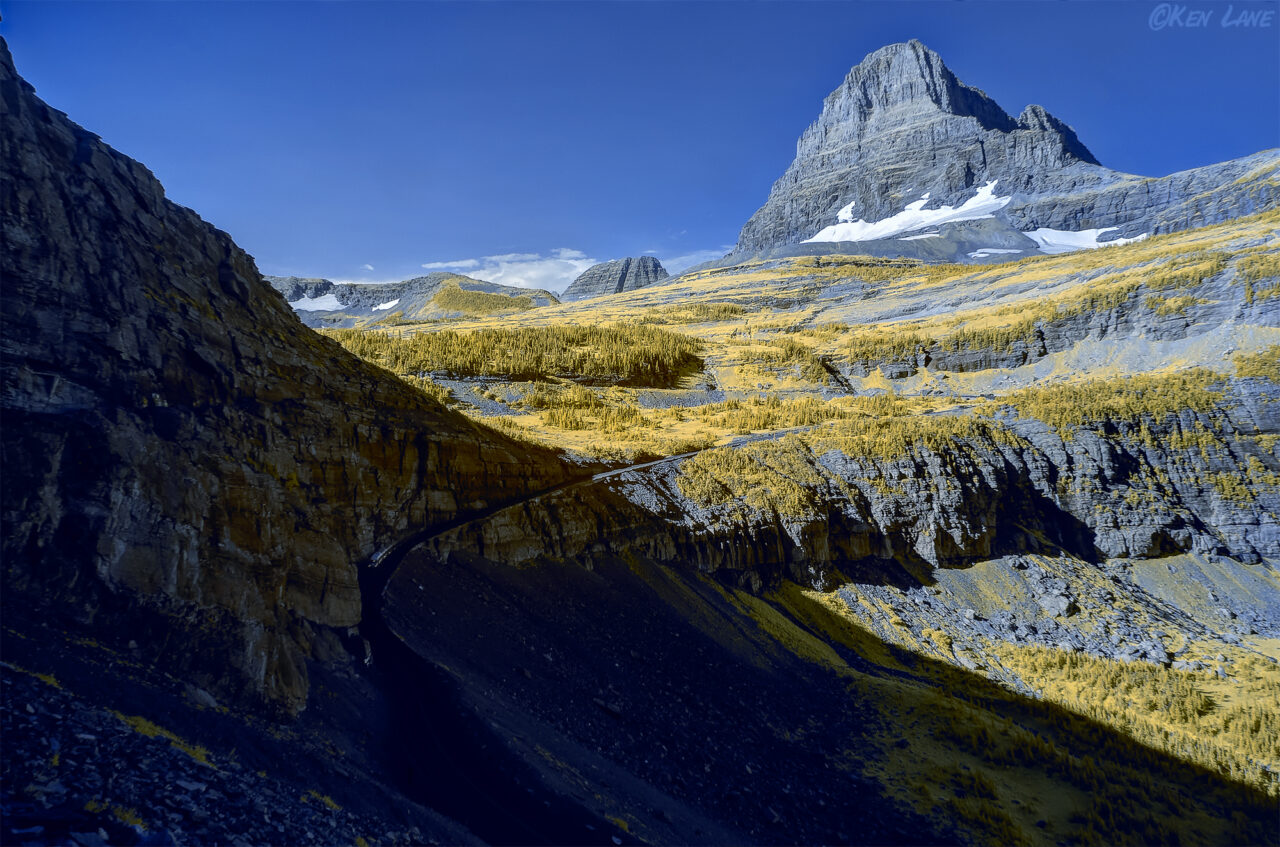Discover the Highline Trail: A Gem of Glacier National Park
If you’re looking for an unforgettable hiking experience in one of America’s most stunning national parks, look no further than the Highline Trail. This must-see attraction is renowned for its breathtaking alpine landscapes, diverse wildlife, and exhilarating hiking paths that offer a unique blend of thrill and tranquility.
Get more Glacier National Park News here!
Location of Highline Trail in Glacier National Park
The Highline Trail is nestled within the rugged beauty of Glacier National Park, located in the Northwestern corner of Montana. This park, often referred to as the “Crown of the Continent,” lies just south of the Canadian border. The Highline Trail begins at the Logan Pass Visitor Center, one of the highest points within the park and a major highlight on the renowned Going-to-the-Sun Road.
Getting to the Highline Trail
Reaching Glacier National Park and the Highline Trail can be quite the journey, but it’s worth every mile. If you’re traveling by air, the closest major airports are Glacier Park International Airport (30 miles west) and Missoula International Airport (150 miles south). From either of these airports, you can rent a car and travel to the park. Once inside Glacier National Park, you can drive along the scenic Going-to-the-Sun Road to reach the Logan Pass Visitor Center, where the Highline Trail begins.
Best Time to Visit the Highline Trail
The ideal time to hike the Highline Trail is during the summer months, from late June to early September. This period provides the most pleasant hiking conditions, with average daytime temperatures ranging from the mid-60s to low 80s°F. However, keep in mind that summer is the busiest time of year in Glacier National Park, so expect larger crowds, especially on weekends. For a more solitary experience, consider visiting on a weekday, or in early June or late September, when the weather is still relatively mild but there are fewer visitors.
Other Attractions Near the Highline Trail
Grinnell Glacier
- Distance: 11 mile round trip
- Elevation Gain: 1,600 feet
- Difficulty: Moderate to Strenuous
Just a short drive from the Highline Trail, the trail to Grinnell Glacier offers another unforgettable hiking experience. The path takes you past stunning alpine lakes, towering waterfalls, and, of course, the spectacular Grinnell Glacier itself.
Iceberg Lake Trail
- Distance: 9.6 mile round trip
- Elevation Gain: 1,275 feet
- Difficulty: Moderate
The Iceberg Lake Trail is a popular hike due to its relatively gentle grade and the breathtaking Iceberg Lake at the trail’s end, which is filled with floating ice chunks even in summer.
Top Photo Spots on the Highline Trail
The Highline Trail offers countless photo opportunities, but there are a couple of spots that stand out.
Garden Wall
One of the most iconic views on the Highline Trail is the Garden Wall, a steep cliff on the Continental Divide carpeted with an array of colorful wildflowers. This spot offers a dramatic backdrop for photos, especially in the early morning or late afternoon when the light is most beautiful.
Haystack Butte
About halfway along the trail, hikers reach Haystack Butte, a distinctive peak that offers panoramic views of the surrounding mountains and valleys. It’s a perfect place to pause for a memorable photo, especially if you’re lucky enough to spot mountain goats or bighorn sheep in the vicinity.
Follow us on Facebook for more up-to-date National Park content!
Where to Stay
When it comes to lodging options, Glacier National Park offers a plethora of choices. For those who appreciate the great outdoors, several campgrounds are available within the park through Recreation.gov. These include the Apgar, Fish Creek, and Many Glacier campgrounds, among others.
For those who prefer more creature comforts, vacation rentals are available through platforms such as AirBNB and VRBO. Here, you can find everything from cozy cabins to luxurious lodges.
Glamping tents, yurts, hostels, motels, hotels, cottages, and even houseboats are available near the park. KOA Campgrounds offer cabins and RV spaces, while hostels provide budget-friendly options.
Dining Options
There’s no shortage of dining options in and around Glacier National Park. Within the park, you’ll find a handful of eateries including the Swiftcurrent Restaurant in Many Glacier, Two Dog Flats Grill at Rising Sun, and Russell’s Fireside Dining Room at Lake McDonald Lodge.
In nearby towns such as Columbia Falls and Kalispell, you’ll find a variety of restaurants, cafes, and grocery stores. Be sure to sample local cuisine like huckleberry pie or Montana trout!
Travel Tips & Safety
Safety should always be your priority when visiting Glacier National Park. Always carry a map and compass, as cell service can be spotty. Hydration is key, so bring plenty of water, especially during summer months.
Check the park’s pet policies before you go – pets are only allowed in certain areas. Keep in mind that Glacier National Park is bear country, so carry bear spray and know how to use it.
Also, be aware of altitude hazards. The park’s high elevation can cause altitude sickness, so take it easy on your first few days. Always check if you need any permits before your visit, especially for backcountry camping.
Latest Park Alerts
Before your visit, always check the latest park alerts on the National Park Service’s website. This will keep you updated on weather, trail closures, wildfire risks, and road conditions. Visit the official alerts page here: Glacier National Park Alerts.
Get Involved
Glacier National Park offers several volunteer opportunities. From trail work to visitor programs, there’s something for everyone. Participate in citizen science projects, assist rangers, or help maintain campgrounds. Your involvement can make a real difference in preserving this magnificent park for future generations. Learn more about how and where to volunteer here.


